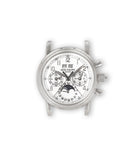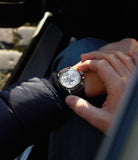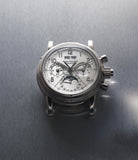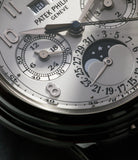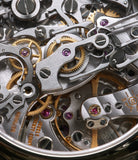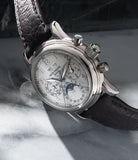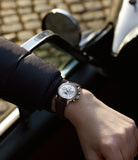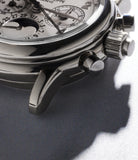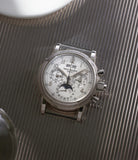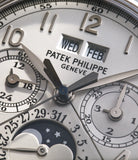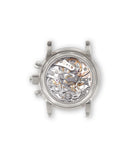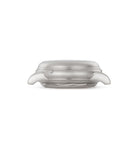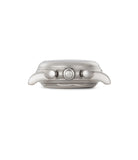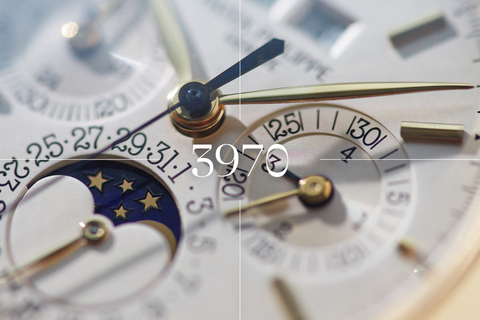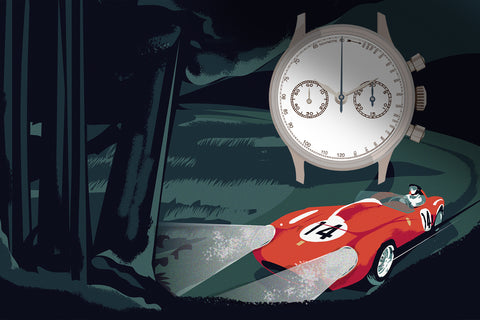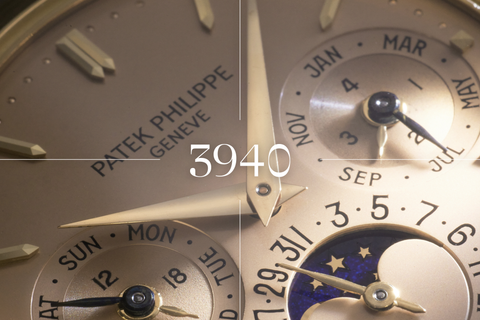Introduced in 1996, the reference 5004 is an evolution of the reference 3970, combining a perpetual calendar complication with a split-seconds chronograph - a rarely seen and ambitious fusion of many complications. The series was discontinued in 2012 after just 15 years of production, and was followed by the reference 5204. Out of all the precious metal examples produced, yellow gold is most commonly seen, followed by rose gold, platinum, and with white gold being the rarest with a further 50 end-of-series watches produced in stainless steel.
Hailing from a long lineage of impressive perpetual calendar chronographs, the reference 5004 has been referred to as the modern 2499, while comparisons have also been drawn with the reference 3970 in terms of case shape and wearability. The dial takes inspiration from the reference 1518, borrowing the same style of Arabic numerals and combining them with a classic tachymeter scale. The layout of the watch is balanced, with sub-dials placed at 3, 6, and 9 o’clock respectively, in addition to leaf shaped hands.
The reference 5004 is powered by the CH27, based off the Lemania 2310 ebauche. According to then-president Philippe Stern, as quoted in Revolution Magazine, it wasn't easy to get this right. "The problem was that the Lemania 2310 or CH 27, was never intended to be a split seconds chronograph. We had two major challenges. The first was the pinion that all the hands – hours, minutes, chronograph seconds and split seconds – had to be made even longer and we were really stretching the limits of what was possible. Even the slightest mistake it was easy to bend this pinion. And second thing was that the CH 27 would experience rattrapante drag each time the split seconds function was activated." This problem was eventually solved by including an isolator, which lifts the rattrapante roller from the heart cam and only connects the two once the split-seconds function is released.






































































































































































































